The city of Rome didn’t become a mighty empire overnight. Its rise to power spanned centuries, marked by a complex web of political intrigue, military conquest, and cultural innovation. From Romulus and Remus’ legendary founding to the empire’s eventual downfall, Rome’s captivating history has long intrigued scholars and travelers alike. Unraveling the mysteries of this ancient civilization requires a deep dive into its storied past – a journey that promises to shed light on the enduring influence of Rome’s remarkable achievements.
Key Points
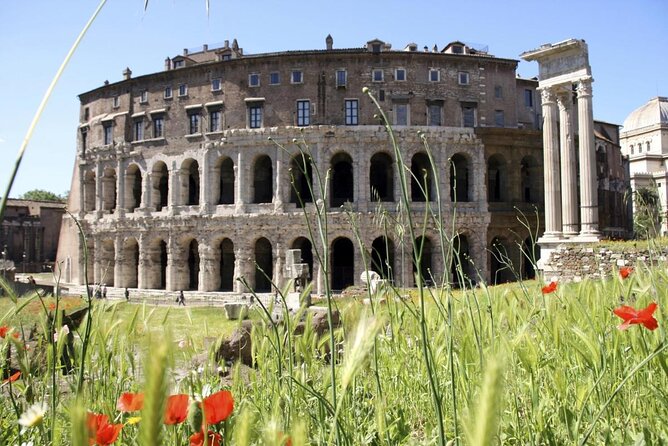
- Rome was founded in the 8th century BCE by Romulus and Remus, and grew from humble beginnings into a powerful empire.
- The Romans built an extensive network of roads and aqueducts, facilitating trade and communication across their territories.
- Tiberina Island housed a temple to the god of medicine and healing, and served as a place of exile for political figures.
- The Jewish Ghetto was a vibrant center for Rome’s Jewish community, preserving their traditions and identity through tumultuous times.
- Iconic landmarks like the Circus Maximus, Marcello Theater, and Temple of Hercules showcase the grandeur and architectural achievements of ancient Rome.
Ancient Rome’s Storied History
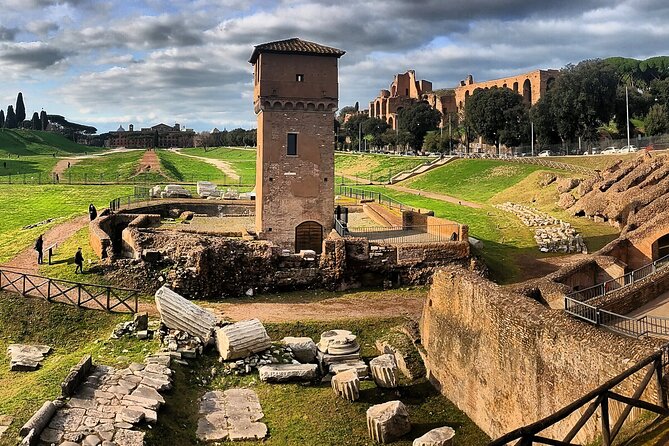
The illustrious story of ancient Rome traces its roots to the founding of the city in the 8th century BCE, when Romulus and Remus established the first settlement on the banks of the Tiber River.
From these humble beginnings, Rome grew to become one of the most powerful empires the world has ever known.
Over the centuries, the Romans built a vast network of roads, aqueducts, and other infrastructure that connected their territories and facilitated trade and communication.
They also made significant contributions to art, architecture, law, and engineering, leaving an indelible mark on Western civilization.
Despite the eventual decline of the Roman Empire, its legacy continues to captivate and inspire people around the globe.
You can also read our reviews of more tours and experiences in Rome.
Tiberina Island and Its Significance
Located in the Tiberium River, Tiberina Island holds a unique and storied past within the city of Rome. This small, crescent-shaped island has played a significant role throughout the city’s long history, serving as a hub for religious, medical, and political activities.
The island’s religious significance dates back to the 3rd century BC, when a temple to the god Aesculapius was erected to honor the god of medicine and healing.
Over the centuries, the island also housed:
- A hospital for the treatment of the sick
- A place of exile for political figures
- A site for important religious ceremonies
Today, Tiberina Island remains an important part of Rome’s rich cultural heritage.
Exploring the Jewish Ghetto

Within the ancient heart of Rome lies the Jewish Ghetto, a neighborhood steeped in centuries of history and cultural significance.
This distinct enclave, established in the 16th century, has long served as a vibrant center for the city’s Jewish community, preserving its traditions and identity through tumultuous times.
As visitors explore the narrow streets and hidden courtyards, they’ll discover a unique blend of architecture, shops, and synagogues that reflect the community’s resilience.
From the aroma of freshly baked challah to the sound of Hebrew prayers, the Jewish Ghetto offers a profound glimpse into the rich tapestry of Rome’s multicultural heritage.
It’s a testament to the enduring spirit of a people who’ve long called this city home.
Circus Maximus and Its Grandeur
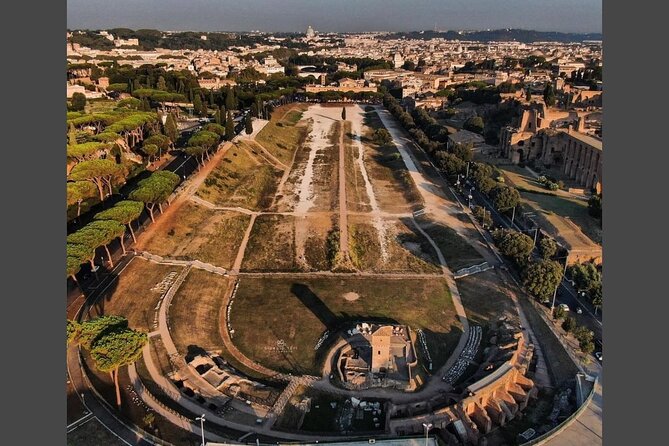
Towering over the ancient landscape, the Circus Maximus stands as a testament to the engineering prowess and spectacle-loving nature of the Roman Empire.
This grand arena, once the site of thrilling chariot races and magnificent festivals, drew crowds from all corners of the city to witness the feats of skilled drivers and the grandeur of imperial celebrations.
The Circus Maximus was a true marvel of its time, boasting:
- Seating for up to 250,000 spectators
- A track measuring over 600 meters in length
- Elaborate decorations and grand entrances that showcased the wealth and power of Rome
Today, the Circus Maximus stands as a reminder of the Roman Empire’s unparalleled ability to captivate and entertain its people, leaving an indelible mark on the history of the ancient world.
Marcello Theater and Its Architecture
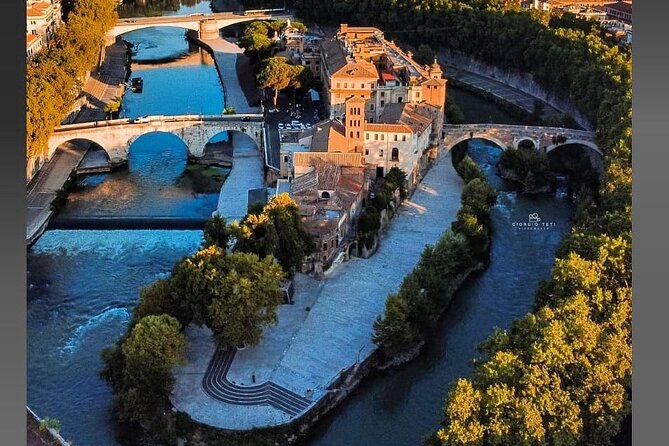
The Marcello Theater, an architectural gem nestled within the heart of ancient Rome, captivates visitors with its striking blend of Greco-Roman design elements. Commissioned by Augustus Caesar, this grand structure stood as a testament to the city’s cultural and theatrical prowess, hosting a variety of performances that delighted the masses.
With its imposing arched entrances and intricate decorative elements, the Marcello Theater embodied the grandeur and sophistication of the Roman Empire. Visitors can still marvel at the theater’s impressive scale and the ingenious engineering that allowed it to accommodate large audiences.
Today, the Marcello Theater stands as a testament to the enduring legacy of ancient Rome’s architectural achievements.
The Temple of Hercules’ Endurance
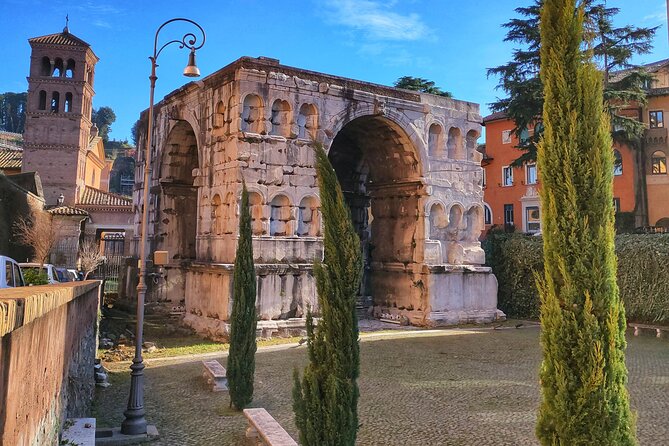
Amidst the bustling streets of ancient Rome, the Temple of Hercules has endured the test of time, standing as a revered architectural masterpiece that continues to captivate visitors.
Constructed in the 2nd century BC, this remarkable structure has weathered the ravages of history, including fires, invasions, and the ravages of time. Yet, it remains a testament to the ingenuity and craftsmanship of its builders.
Visitors can’t help but be awed by its:
- Impressive scale and grandeur
- Exquisite details and intricate carvings
- Timeless significance as a symbol of Rome’s enduring legacy
Today, the Temple of Hercules stands as a living embodiment of Rome’s glorious past, inviting all who behold it to imagine the splendor of this ancient civilization.
Insights From Imperial Rome’s Days
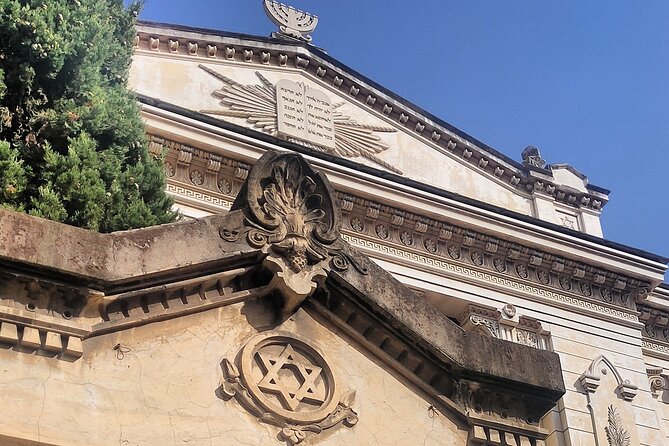
As visitors explore the enduring Temple of Hercules, they’ll uncover captivating insights into the grandeur of Imperial Rome’s days. From the stories of emperors and gladiators that echo through the streets to the bustling energy that once filled the city, this walking tour offers a unique window into the remarkable history and culture of ancient Rome.
| Iconic Sights | Fascinating Histories |
|---|---|
| Circus Maximus | Chariot races and spectacles |
| Marcello Theater | Theatrical performances and political events |
| Jewish Ghetto | Vibrant cultural hub for Rome’s Jewish community |
| Capitoline Hill | Seat of ancient Roman power and religion |
The tour transports visitors back in time, painting a vivid picture of the triumphs and tribulations that shaped the rise of the Roman Empire.
Mingling With Fellow Travelers
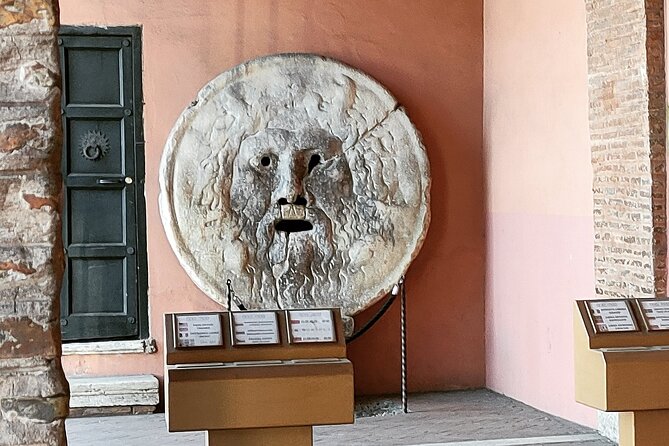
On this tour, travelers have ample opportunities to mingle with fellow adventurers, fostering a sense of camaraderie as they uncover the hidden gems of ancient Rome together.
The small group size allows for friendly interactions and the sharing of unique perspectives. Participants often find themselves:
- Exchanging travel stories and recommendations over a gelato break
- Bonding over their shared fascination with Roman history and culture
- Snapping group photos in front of iconic landmarks, creating lasting memories
This convivial atmosphere enhances the overall experience, transforming the tour into not just a learning adventure, but a chance to connect with like-minded explorers from around the world.
Frequently Asked Questions
What Are the Tour’s Cancellation and Refund Policies?
The tour offers free cancellation up to 24 hours before the experience. Travelers can get a full refund if they cancel within this time frame. The policy provides flexibility for those who may need to change their plans.
Is This Tour Suitable for Children or Families?
This tour is suitable for families and children. It’s wheelchair and stroller accessible, and the group size is capped at 25 travelers, allowing for a more personalized experience. Free cancellation up to 24 hours before the tour provides flexibility.
Are There Any Accessibility Considerations for the Tour?
The tour is wheelchair and stroller accessible, making it suitable for families. With its near proximity to public transportation, visitors of all abilities can easily join the 2-hour walking exploration of ancient Roman landmarks.
Can the Tour Be Customized or Personalized?
This tour can’t be fully customized, but the guide will tailor the experience to the group’s interests. Travelers can discuss their preferences with the guide to ensure they get the most out of the 2-hour walk through ancient Rome.
What Should Participants Bring or Wear for the Tour?
Participants should wear comfortable walking shoes and dress for the weather. They should also bring water, snacks, and a camera to capture the iconic sights of ancient Rome during the 2-hour walking tour.
Recap
The rise of Rome from a humble settlement to a mighty empire is a captivating story.
Its enduring legacy can be found in the city’s historic landmarks, each offering a glimpse into the ingenuity and grandeur of ancient Roman civilization.
As the world continues to be inspired by Rome’s achievements, the city remains a testament to the power of human ambition, resilience, and innovation.
More Tour Reviews in Rome
Not for you? Here's more things to do in Rome we have recnetly reviewed
- Rome: Trevi Fountain Underground Aqueduct Walking Tour
- Rome: Orvieto and Civita di Bagnoregio Day Trip by Train
- Semi-Private First Entry Colosseum Arena & Roman Forum
- Rome: Colosseum Arena, Forum & Palatine Hill Guided Tour
- Rome: Off the Beaten Path Private Tour
- Rome: Highlights & Hidden Gems, Vespa Sidecar Guided Tour
- Rome: Ancient Rome Nighttime Sightseeing Tour
- Rome: Colosseum with Arena Floor, Palatine Hill & Forum Tour
- Rome: Vatican Museums Sistine Chapel St Peters Basilica Tour
- Rome: Private Customizable 3-Hour Golf Cart City Tour
- Rome: Vespa Self-Drive Tour with Gelato
- Rome: Campo de’ Fiori, Villa Farnesina & Trastevere Tour
